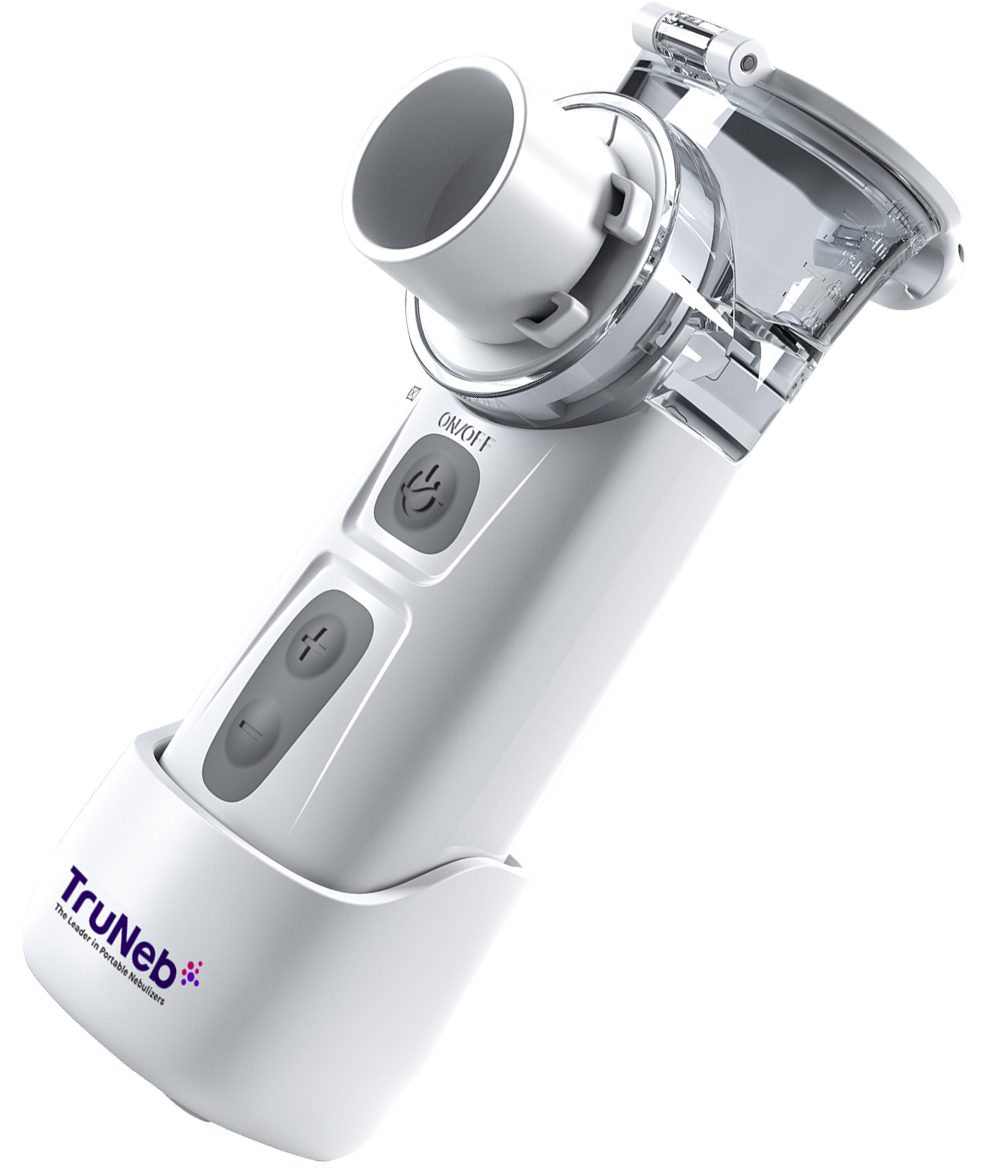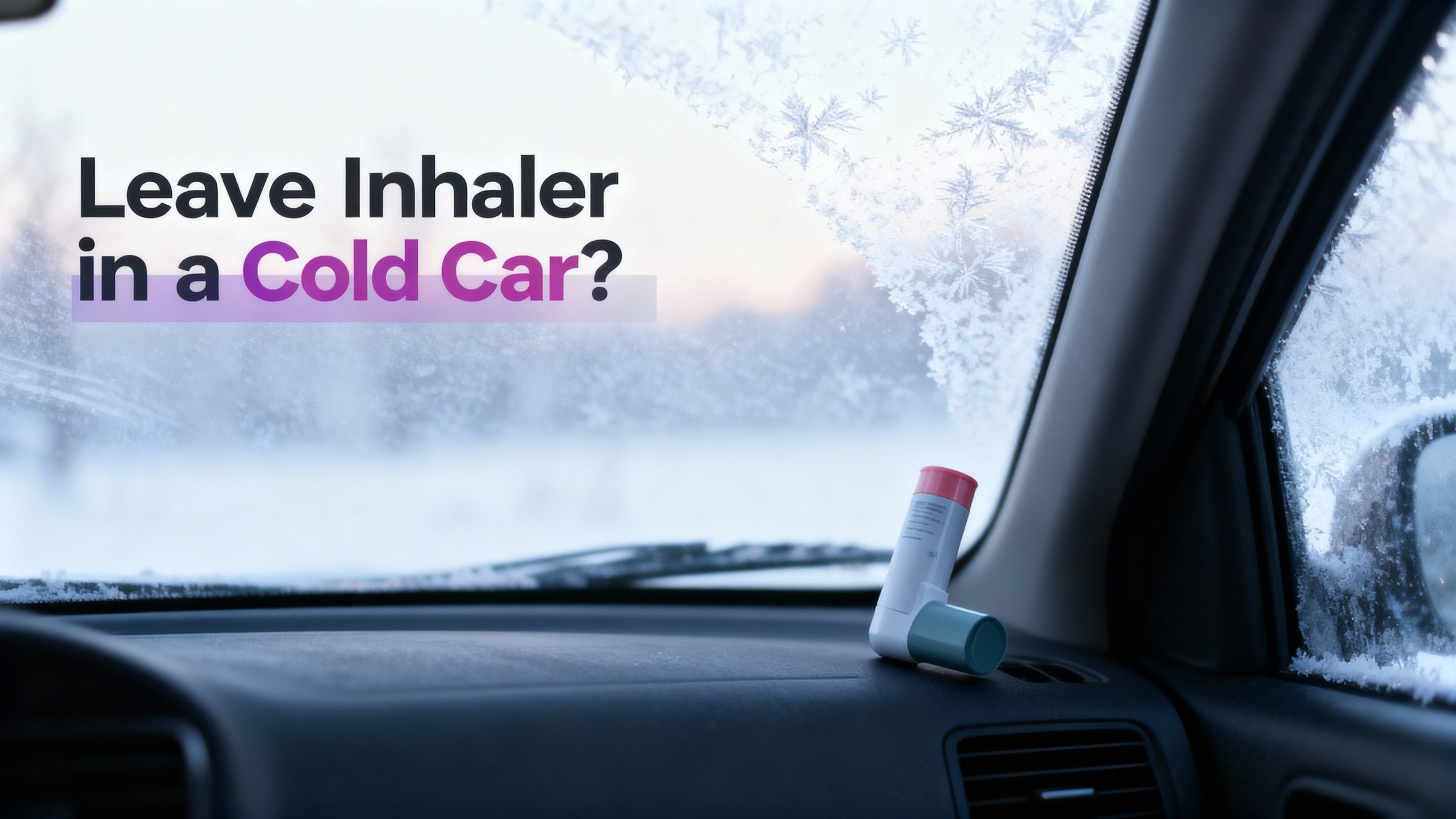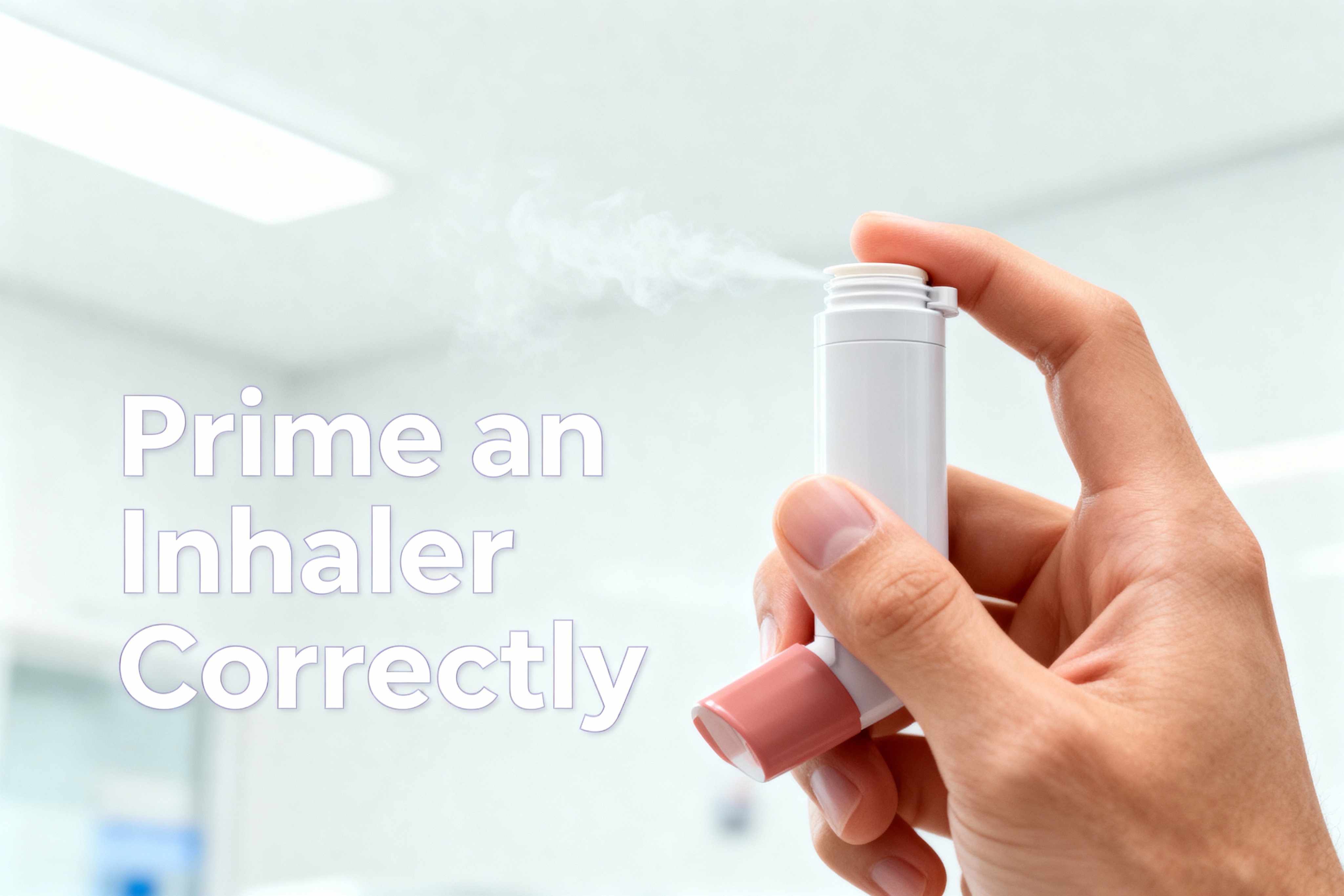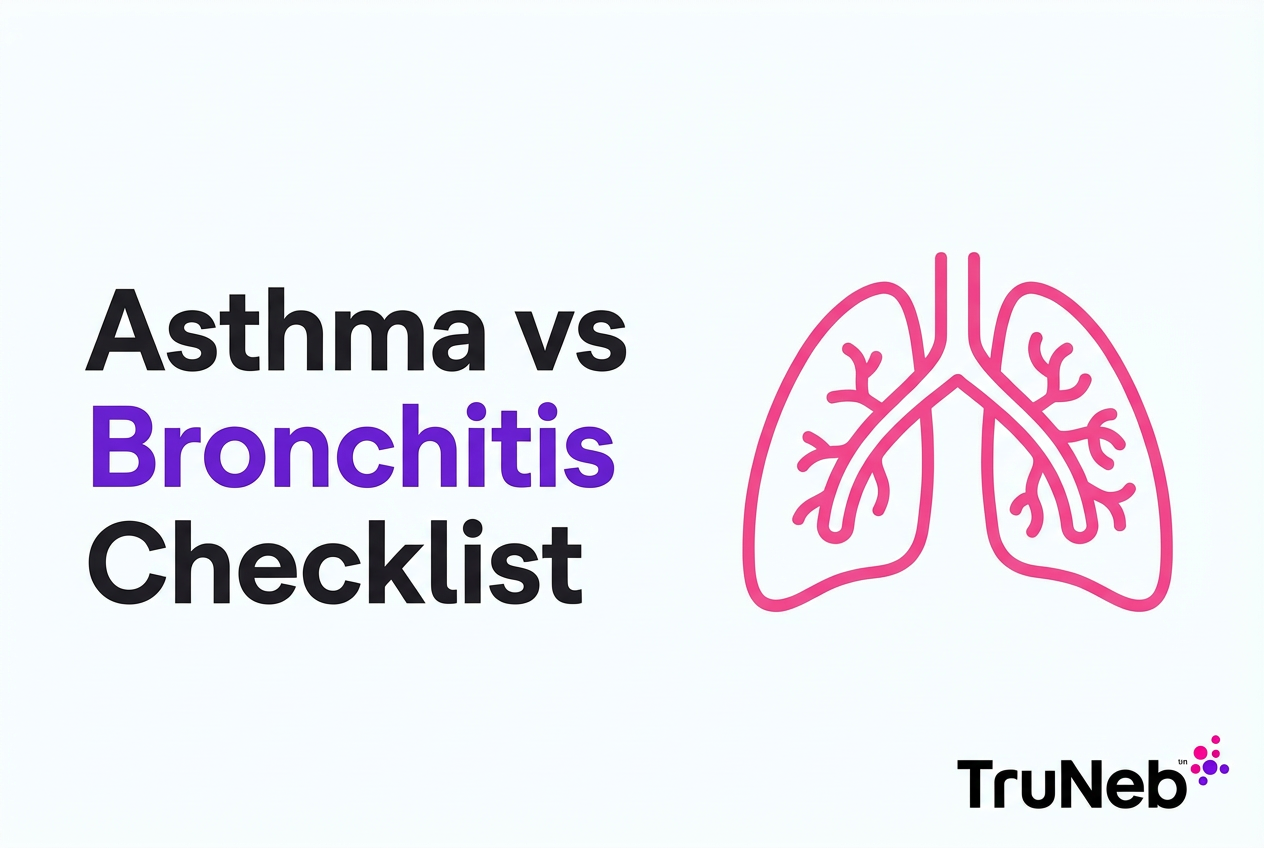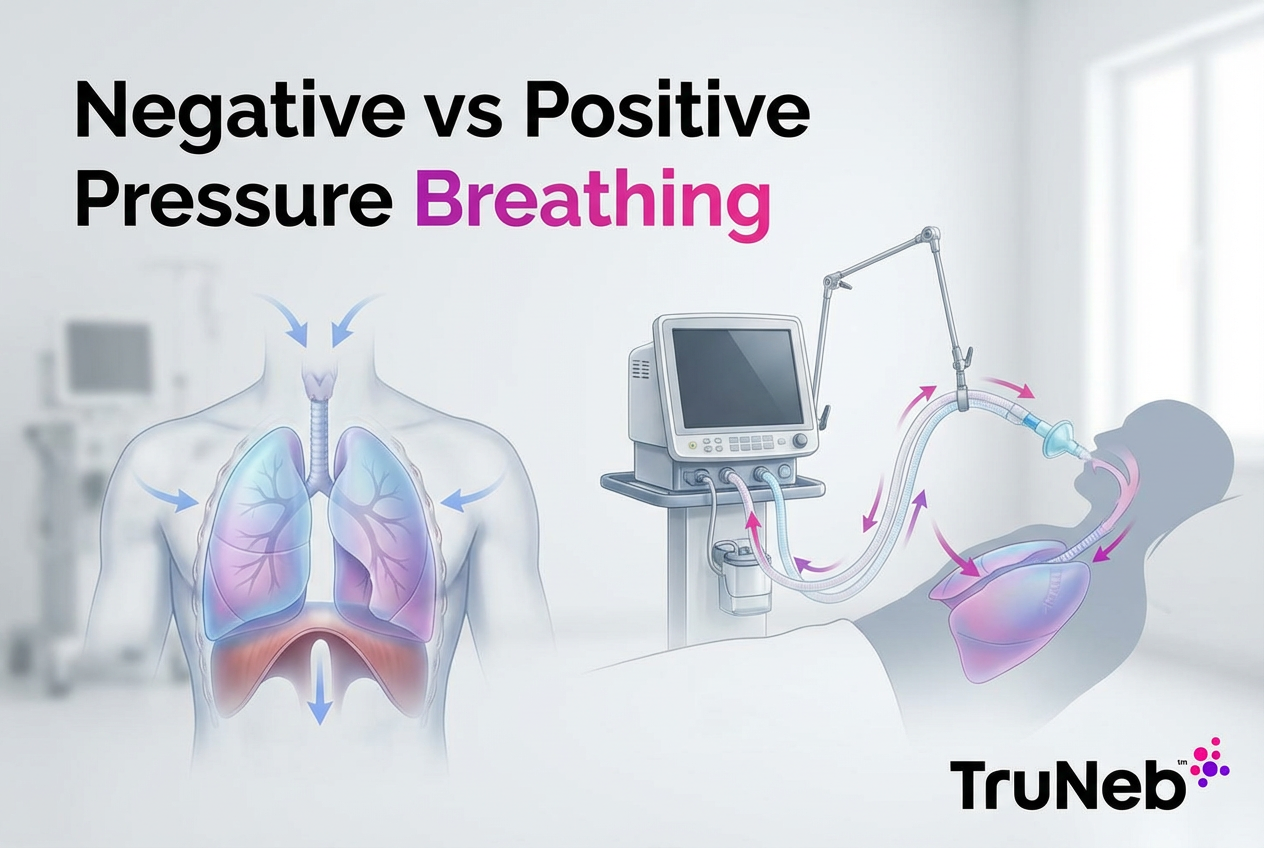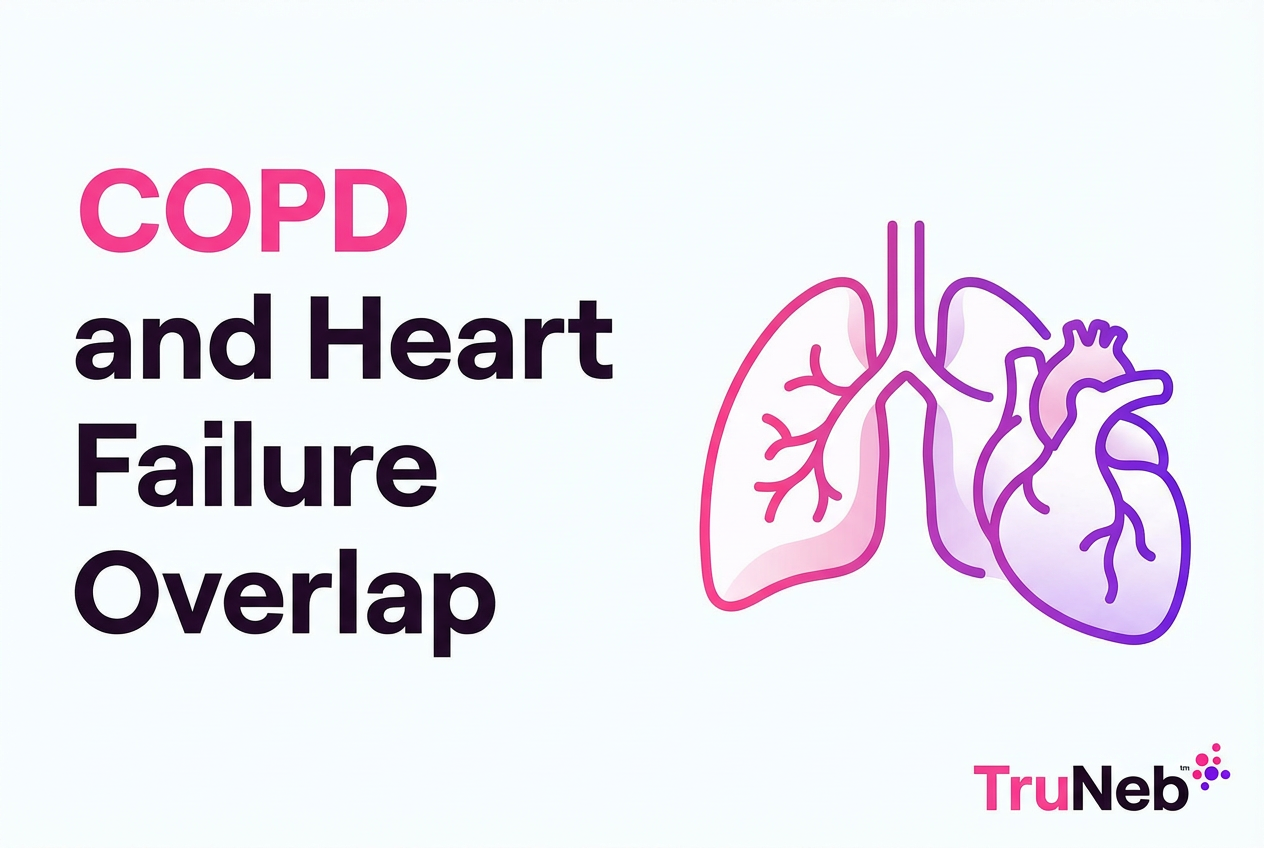On this page
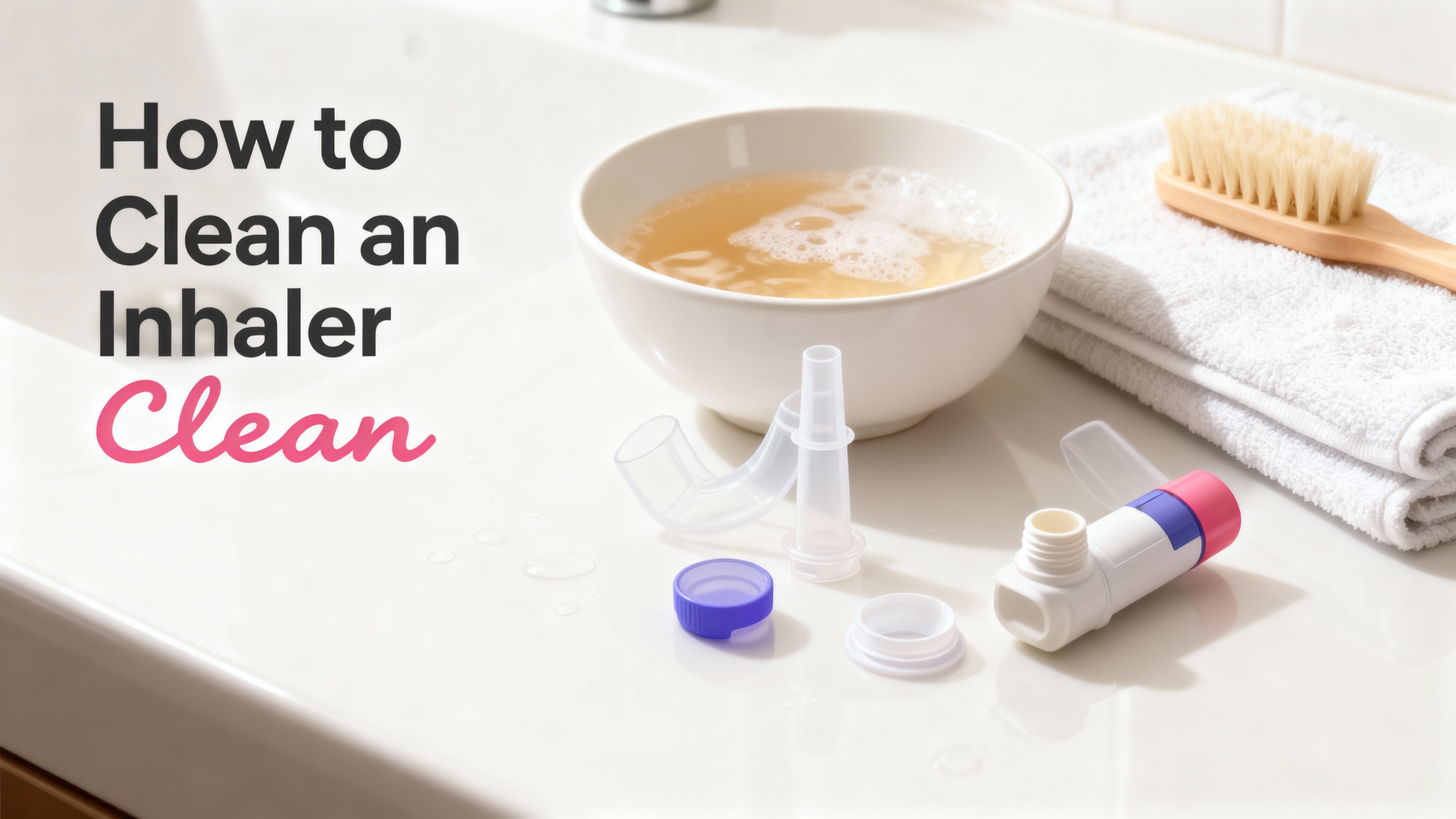
Why Cleaning Your Inhaler Matters
A clean inhaler works better. Medicine can dry on the mouthpiece and block the spray. Dust and lint can also build up. When that happens, you might not get the dose you expect. Regular cleaning helps the device deliver medicine the way it should.
If you use an inhaler for asthma or COPD, keeping it clean helps ensure you get the dose your doctor prescribed.
Simple rule of thumb: a few minutes of weekly cleaning can help prevent clogs and weak sprays.
Cleaning prevents clogs and keeps each puff delivering the dose your lungs expect.
Supplies You’ll Need
- Warm water
- Mild dish soap (optional for sticky residue)
- Clean, dry cloth or paper towel (for outside only)
- A dust-free spot to air-dry
Skip alcohol, bleach, boiling water, and dishwashers. These can damage the device.
A quick rinse with warm water and a dust‑free air‑dry spot are the basics for most MDIs.
Step-by-Step: Clean a Metered-Dose Inhaler (MDI)
For most MDIs (like albuterol HFA/Ventolin HFA), remove the canister, rinse the plastic mouthpiece with warm water weekly, and let it air-dry completely.
- Remove the metal canister. Set it aside. Do not get it wet.
- Take off the mouthpiece cap.
- Rinse the plastic actuator/mouthpiece under warm running water for 30–60 seconds. If there’s sticky residue, you can use a drop of mild dish soap, then rinse well.
- Gently shake off excess water. Don’t stuff tissues or cloth inside the mouthpiece.
- Air-dry completely in a clean area. Overnight drying works well. The inside should be fully dry before use.
- Reassemble. Put the canister back in and replace the cap. If your device’s instructions say to prime after cleaning, spray the recommended test puffs into the air.
These steps match common MDI directions found in standard inhaler inserts (for example, albuterol HFA devices). Always follow your inhaler’s leaflet if it differs.
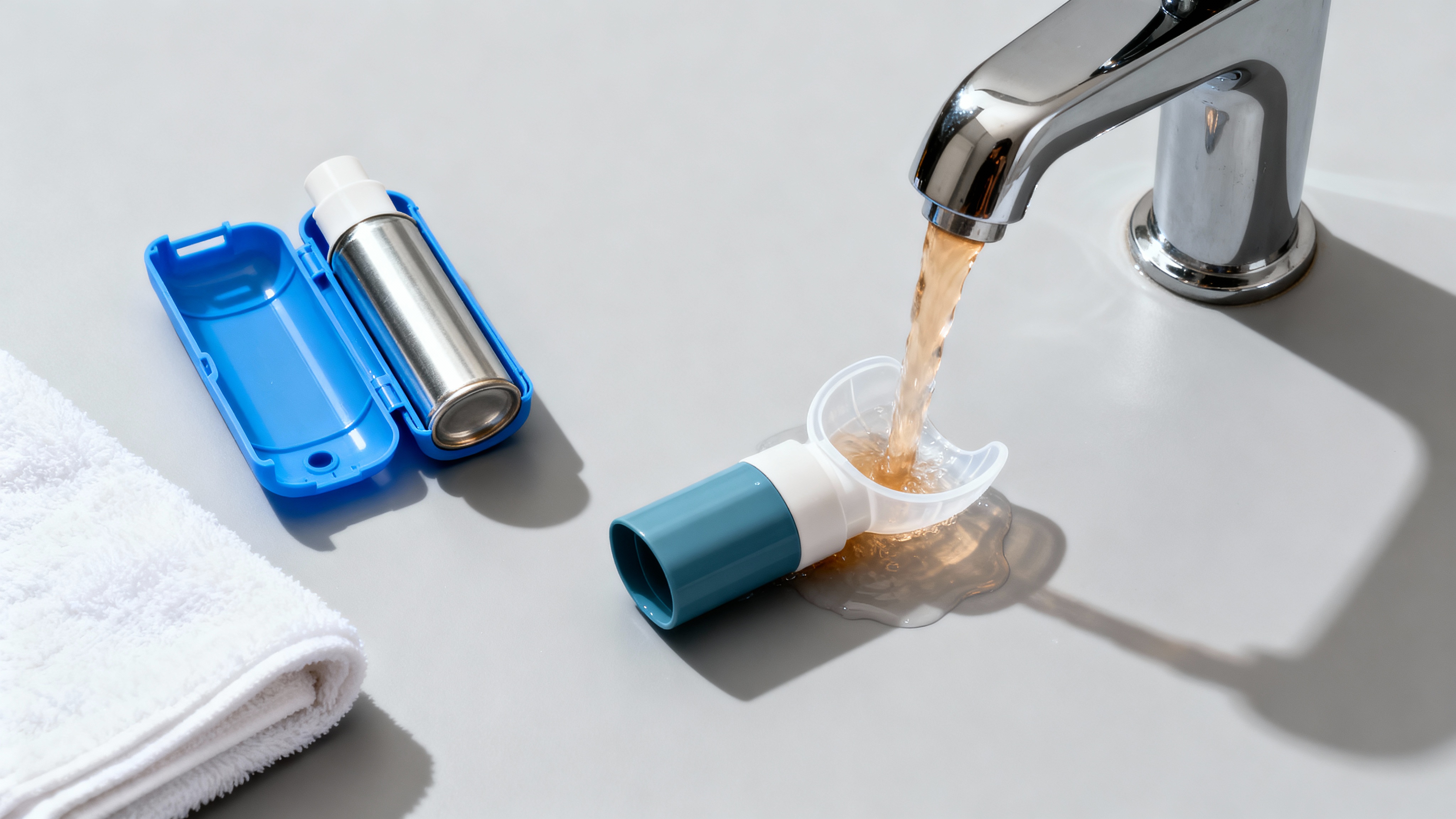
Cleaning Other Inhaler Types
DPIs stay dry and get wiped; soft‑mist inhalers get a weekly wipe — no soaking.
Each inhaler type has its own cleaning “personality.” MDIs like a weekly rinse—but keep water far from the metal canister. DPIs hate moisture, so just a dry wipe will do. And SMIs? They’re the neat freaks—just a quick swipe with a damp cloth keeps them happy.
Dry Powder Inhalers (DPI) — How to Clean
Never rinse a dry powder inhaler; wipe the mouthpiece with a dry cloth and keep it closed between uses. Moisture can clump the powder and block the dose.
Soft Mist Inhalers (SMI) — How to Clean
Wipe the mouthpiece/nozzle with a clean, damp cloth weekly — don’t run SMIs under water. Don’t soak the device.
Breath‑Actuated MDIs (e.g., QVAR RediHaler) — How to Clean
Some integrated MDIs shouldn’t be rinsed; follow the leaflet and usually wipe only.
| Inhaler type | Common examples | Clean this way | Avoid |
|---|---|---|---|
| MDI (pressurized, HFA) | Albuterol HFA (Ventolin), steroid MDIs | Remove canister; rinse plastic mouthpiece with warm water weekly; air‑dry fully | Wetting metal canister; alcohol; boiling; dishwasher |
| DPI (dry powder) | Diskus, Ellipta, Flexhaler, HandiHaler | Keep dry; wipe mouthpiece with a dry cloth; close when not in use | Rinsing or submerging in water |
| SMI (soft mist) | Respimat devices | Wipe mouthpiece/nozzle with a clean, damp cloth weekly; keep dry | Running under water; soaking |
1 Device specifics vary. Follow your inhaler’s instructions for use.
How Often Should You Clean Your Inhaler?
- MDIs: Clean at least once a week, or sooner if you see buildup or the spray looks weak.
- DPIs: Wipe the mouthpiece as needed to keep it free of dust. Do not rinse with water.
- SMIs: Wipe the mouthpiece weekly.
You don’t need to clean after every use; weekly is enough unless you see buildup. If you’ve been sick (cold or flu), clean the mouthpiece once you’re feeling better to freshen it up.
MDIs: clean weekly; DPIs: wipe as needed; SMIs: wipe weekly.
Bottom line: a weekly routine helps your inhaler stay rescue-ready.
Dos and Don’ts for Safer Cleaning
Do rinse plastic MDI parts and air-dry; don’t use alcohol, boiling water, or dishwashers.
- Do: Remove the metal canister before rinsing an MDI.
- Do: Use lukewarm water; a drop of mild dish soap can help with sticky residue.
- Do: Let parts air-dry completely before reassembly.
- Do: Keep the cap on when not in use to block dust and lint.
- Don’t: Use rubbing alcohol, bleach, or harsh cleaners on the mouthpiece.
- Don’t: Boil parts or use very hot water.
- Don’t: Put any DPI under water.
- Don’t: Reassemble or use the inhaler while it’s still wet.
Can I clean my inhaler with alcohol? No — it can damage the device and leave residue.
If you have severe breathing trouble, blue lips/face, or your rescue inhaler isn’t helping, call emergency services or seek urgent care right away.
Safety note: Talk to your doctor or pharmacist if your inhaler still isn’t working right after cleaning. Don’t change your medication plan on your own.
Proper Storage and Ongoing Maintenance
- Store at room temperature. Avoid extreme heat or cold (like hot cars or freezers).
- Keep the mouthpiece cap on to prevent dust and lint.
- Avoid humid spots (like steamy bathrooms).
- Don’t share inhalers.
- Label devices if multiple family members use inhalers.
- Check dose counters and expiration dates. Replace devices as instructed.
If you use a spacer with your MDI, clean the spacer per its instructions (often warm, soapy water and air-dry).
Store at room temperature with the cap on, away from heat, cold, and humidity.
Frequently Asked Questions
Tap or click a question below to see the answer:
Make sure it’s fully dry and correctly assembled. Check the dose counter (if present) and follow your device’s priming steps. If it’s still not spraying, it could be empty or clogged beyond cleaning. Ask a pharmacist for help.
Yes, for MDIs you can use a little mild dish soap on the plastic mouthpiece if water alone doesn’t clear residue. Rinse well so no soap remains. Don’t use soap or water on DPIs.
Spacers usually need their own cleaning steps (often a soak or wash in warm, soapy water and air-dry). Follow the spacer’s leaflet.
A normal clean is usually enough. You can wipe the mouthpiece with a clean, damp cloth and let it dry fully. If you’re unsure, ask your pharmacist how to freshen your specific device.
A Quick Note on Nebulizers
Some people use a nebulizer when inhalers are hard to time or during flare-ups. A portable mesh nebulizer like TruNeb™ can deliver a fine mist without strong breaths or perfect timing. Nebulizers have different cleaning steps than inhalers. Follow your nebulizer’s manual for daily rinsing and regular disinfection. Steam inhalers are not nebulizers and are not for breathing prescription medications.
Reminder: Talk to your doctor before trying a new medication or changing how you take your current one.
Conclusion and Disclaimer
Weekly cleaning is a simple habit that keeps your inhaler ready when you need it. Make it part of your routine so every puff delivers as expected.
Disclaimer: This article is for informational purposes only and isn’t a substitute for professional medical advice, diagnosis, or treatment. Always talk with your doctor about your health and medications.

